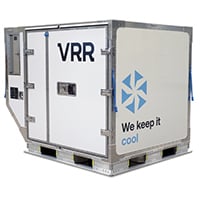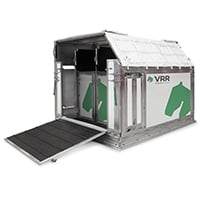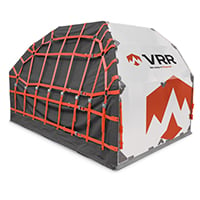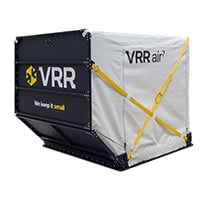In the previous article about the myths surrounding the standards of certified vs. non-certified ULDs it was all about what requirements both types of ULDs need to meet before they’re ready for takeoff. But there’s a couple of myths that haven’t been debunked yet.
Not only the standards of FAA and EASA play a huge part in certification, how certification works within the aviation industry leaves a few myths to uncover.
In this article, we dispel three common myths regarding the air cargo industry.
MYTH 1: If a ULD is certified, it can be used on any aircraft
Not true. Actually, you can use a certified ULD on an aircraft only if the aircraft’s Weight and Balance Manual (WBM) permits it. What’s more, even though it is certified, you must still restrain the ULD using the aircraft’s Cargo Loading System.
Some of the limiting factors that may be included in an aircraft’s WBM are:
• Configuration of the aircraft’s Cargo Loading System
• Maximum allowable load per position
• Strength of attachment hardware (straps and other restraint devices)
• Aircraft’s sidewall or floor angles
It’s true that a certified ULD means it is structurally capable of restraining a load and/or does not compromise the safety of the aircraft systems and structure. But if you don’t comply with the instructions set out in the WBM, the ULD is not certified for use on that aircraft. So, always check the aircraft’s WBM.
MYTH 2: Non-certified ULDs can be used on any plane as long as it’s loaded onto the lower deck
False. It’s true that non-certified ULDs are typically placed on the lower deck rather than the main deck. However, you cannot use a non-certified ULD in any compartment of any aircraft, including the lower deck, unless authorised by the aircraft’s manufacturer or the WBM. Airbus aircraft, for example, do not generally allow non-certified ULDs onto their lower decks.
These restrictions ensure the ULD and/or its contents do not become a hazard or damage the aircraft’s structure while in flight. One of the most familiar aircraft that can deal with non-certified ULDs is the B767 series. Its holds are designed to keep the cargo inside its container during extreme flight conditions.
MYTH 3: An airline operator isn’t responsible for ensuring a ULD remains compliant
Incorrect. Although the certification process of a ULD is carried out between the ULD manufacturer and the relevant regulatory authority, operators also have a responsibility for ensuring that any ULD—once in operation–remains compliant with the standards.
In other words, all airline operators have a duty to ensure that the ULDs they are using to contain cargo are airworthy. And that responsibility extends to certified ULDs.
To help operators carry out this responsibility, the ULD manufacturer provides a Component Maintenance Manual. This describes the ULD’s limitations. Operators then perform checks and inspections on the basis of these limitations before each ULD is put into operation.
If an inspection shows that the ULD exceeds the stated limits, it is no longer airworthy. Therefore, the ULD must be taken out of service and repaired by a PART-145 approved station.
Once the repair is done, the ULD is released back into service, accompanied by an EASA FORM 1 or equivalent. The operator must keep these forms because they prove the ULD has continued airworthiness.
To make matters easier when it comes to fixing the ULD to become airworthy again, VRR has a PART-145 approved station in Badhoevedorp. It’s close to Schiphol Airport, which makes repair a bit more convenient.
Do you like to know more about certified and non-certified ULDs? Check out this page on ULD certification. Needing to repair a ULD? Contact our station at info@vrr.aero.











